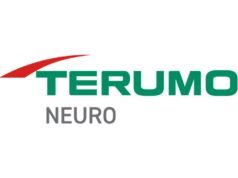
The latest data from the INTERACT trials—a series of studies evaluating intensive blood-pressure (BP) lowering in acute haemorrhagic stroke—point towards the importance of initiating BP reduction as early as possible in patients with intracranial haemorrhage (ICH), but also highlight the potentially harmful effect of these approaches in ischaemic stroke patients.
The 2024 European Stroke Organisation Conference (ESOC; 15–17 May, Basel, Switzerland) saw Xia Wang (The George Institute for Global Health, Sydney, Australia) deliver findings from a pooled analysis looking specifically at the effect of early BP lowering on haematoma growth in acute ICH patients across all four of the INTERACT randomised controlled trials (RCTs) conducted to date, before Gang Li (Shanghai East Hospital, Shanghai, China) and Lili Song (Fudan University, Shanghai, China) presented first-time data from INTERACT4, which sought to assess the impact of ambulance-delivered BP reduction in patients with suspected acute stroke.
“We have shown that the principle of ‘time is brain’ is also applicable to ICH,” said Wang, who is among the lead authors for the former of the two studies. “It is our hope that guidelines will not only strengthen but enforce the importance of time in achieving this level of control.”
In her ESOC 2024 presentation, Wang outlined data from 2,921 ICH patients in the four INTERACT trials, which compared BP lowering to a systolic BP of <180mmHg versus <140mmHg. The four trials, conducted mainly in China, used consistent BP treatment protocols with intravenous agents, as well as standardised imaging assessment and reading paradigms.
Wang and colleagues’ pooled analysis aimed to determine whether the timing of initiating BP lowering affected haematoma growth—and their results ultimately showed that the likelihood of mitigating haematoma growth was improved when BP lowering treatment commenced early. Moreover, they produced data suggesting that it is “the earlier, the better” when it comes to BP reduction in acute ICH patients, as starting the treatment sooner was linked to a greater reduction in haematoma growth, up to a cut-off timepoint of three hours.
“We wanted to determine if very early treatment of BP reduces bleeding in the brain,” Wang stated. “In our patient cohort, the median time from the onset of ICH to randomisation was approximately three hours, and it typically took about one hour to achieve a target BP of less than 140mmHg. Thus, it generally took several hours to achieve BP control after an ICH. In clinical practice though, we can be much quicker, [as] randomisation is not required. Our data show time influences the potential chances of making a recovery from ICH.”
Meanwhile, presentation of INTERACT4 revealed evidence that identifying whether a stroke is haemorrhagic or ischaemic in nature as early as possible could be key to harnessing the benefits of very early, in-ambulance BP lowering for patients with suspected acute stroke. The trial—which was simultaneously published in the New England Journal of Medicine alongside its ESOC presentation—found that intensive BP reduction improved functional outcomes in haemorrhagic stroke patients but worsened outcomes in those with ischaemic strokes.

“Our study highlights the clear benefits of early BP lowering treatment for patients with ICH in the ambulance,” said Craig Anderson—also of The George Institute for Global Health—who was the lead investigator for INTERACT4. “However, it did not alter outcomes for suspected stroke patients overall. In fact, in patients diagnosed with ischaemic stroke, early BP lowering treatment increased death and disability, emphasising the need for a reliable diagnosis at an early stage to harness the benefits of very early BP treatment.”
INTERACT4 was a multicentre, open-label, blinded-outcome RCT conducted across dozens of ambulance services in China. It enrolled a total of 2,404 ambulance-assessed patients with suspected acute stroke causing a motor deficit within two hours of onset and elevated systolic BP (≥150mmHg), who were then randomly assigned to immediate, prehospital BP lowering—with a target of 130–140mmHg within 30 minutes—or usual BP management in hospital.
Haemorrhagic stroke patients in the former of these two groups were found to have a lower likelihood of experiencing a poor functional outcome, as compared to haemorrhagic stroke patients who received in-hospital BP management. Conversely, patients with cerebral ischaemia—those suffering from an ischaemic stroke—had a higher likelihood of experiencing poor functional outcomes in the prehospital BP lowering group versus the in-hospital group. The INTERACT4 investigators also found that, overall, there was balance between the benefits and the harm that early BP reduction may confer, as—across all stroke patients—there was no significant difference in functional outcomes between the two approaches to BP control. The investigators determined that between-group rates of serious adverse events were similar as well.
“All treatments for acute stroke are highly time-dependent, as brain cells rapidly deteriorate when deprived of oxygen—but, determining the best treatment approach before identifying the stroke type is difficult without brain imaging,” Anderson explained. “The results do not support in-ambulance administration of BP lowering treatment in patients with suspected acute stroke, that is clear. However, in the last few years, we’ve seen the introduction of mobile stroke ambulances equipped with CT [computed tomography] scanners and diagnostic tools that aim to identify cases of ischaemic stroke for early administration of clot-busting treatment. Additionally, in-ambulance treatment for haemorrhagic stroke is supported by our results. In the meantime, while acute stroke treatment happens in the hospital, quicker diagnosis and swift action upon the patient’s arrival at the emergency department is critical to preserving brain function.”
Anderson also noted that, while results from INTERACT4 may provide a potential pathway to improving outcomes in patients with ICH—the deadliest type of stroke, and one that is more common in China, where the study was conducted—more research in this area is needed.










